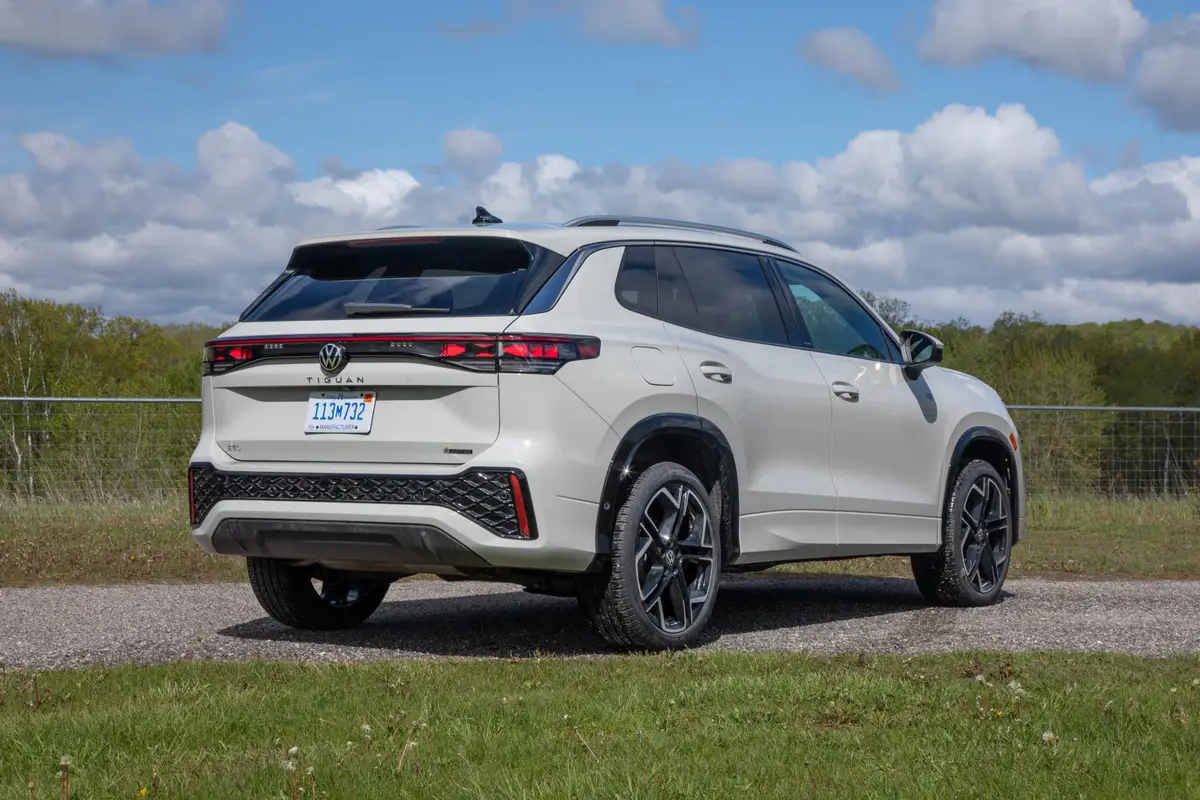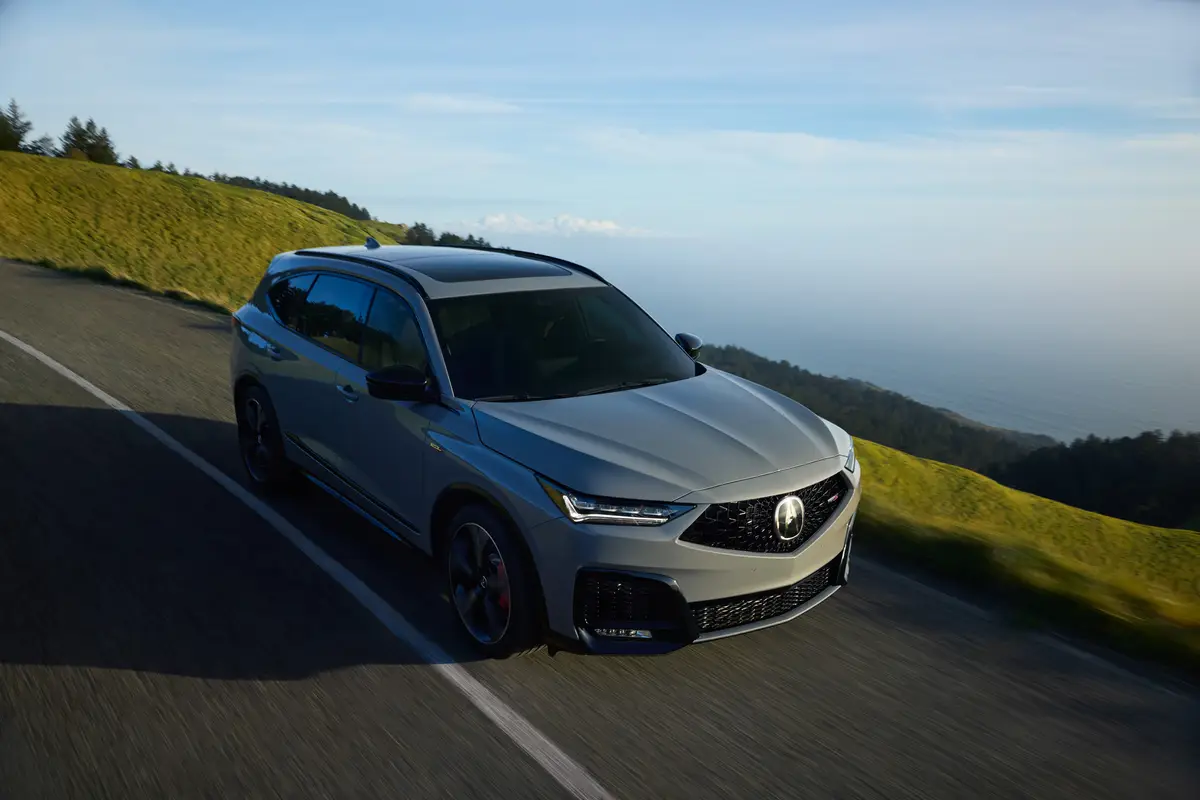Boston.com's view
2000 AUDI TT: A SMOOTH, SULTRY SCAMPERER
She stood at the edge of the road on her small suburban street as the sleek silver sports car slid by; stood in a narrow patch of fresh-turned black soil where her lawn met the street and where she had been working on her flower beds.
In one hand, she held a silver trowel, and in the other, a hose, set to light spray and aimed at the flowers. As the car passed you could see her slowly and purposely mouth the words: “nice car,” and then give it two thumbs up, the trowel catching late afternoon sun in one hand, the light spray from the hose now misting unaimed and back over her shoulder.
The 2000 Audi TT coupe, a low-slung, exquisitely designed little sports car, got attention everywhere it went last week. Stop for gas and the woman pumping beside you would stop, walk over, and ask, “What is that car?” Traveling salesmen would emerge from convenience stores when you parked to get the newspaper, wondering if this was the car for them. Other Audi drivers, recognizing the four silver rings that mark the brand but not the model itself, flocked to its presence.
That is because this is a beautiful little rounded creature of a car. The most hackneyed expression in auto writing may be to say that a car “looks as though it’s ready to pounce.” I’ll avoid that, but will say — and allow you the inclusive phrase — that from its rounded paws of fenders at the front, to its arched, taut rear fenders, this car sits there crouched.
Nothing extrudes from its exterior with any sharpness. All is roundness. The gas portal is silver and ringed with inset fasteners that make you feel as tthough you are pumping fuel into an aircraft rather than a car.
Step back, and it looks just a bit like the Volkswagen New Beetle — though one that has been lowered, just so, to look like a Porsche Speedster with its top up. In fact, this is a hybrid. Its platform is derivative of both the New Beetle and the Golf. Its name — TT — comes from the Tourist Trophy class of motorcycle races in which some long ago permutation of the Audi company raced bikes.
At $31,000, Audi has positioned it somewhere between the Honda Prelude SH and BMW M coupe and Z roadster. Audi is looking for its niche among these and the upcoming Honda 2000S and reincarnated Nissan Z.
Its 1.8-liter, turbocharged and intercooled, 4-in-line, 20-valve engine sends it scampering subtly over hill and dale — though its throaty exhaust announces its presence at every downshift or acceleration.
It is reminiscent of the 1980s Saab Turbos — but without the turbo lag or whine.
And, while the BMW M coupe is all harnessed violence, the TT is bottled and sultry snarl.
Stomp the accelerator and there is a steady surge of power. No kickbacks into the seat or sucking you toward the floor. Instead, just straight ahead, subtle, but building acceleration. With the M coupe, you knew where you were going as so on as you stomped the accelerator, and at the same moment realized you were already there.
In the TT, there is the stomp, the time to gather bearings, and then the realization — surprise — of how fast you are suddenly going.
The TT does 0-60 in 6.9 seconds — almost a second slower than the M coupe, but not bad given that it is a litre smaller and costs about $10,000 less.
The factory sets its top speed at 130 miles per hour and warns drivers to call if the governoring system breaks. It is nimble in commuter traffic, sure-footed on winding country roads, owing to a stiff suspension that the turbocharged New Beetle ought to have.
While the M coupe clings to corners as if it were on a rail, the TT instead adheres as if it has been glued there. There is some chatter from the front-wheel drive, turbo-torque that is inevitable in cars of this design when they accelerate rapidly with the front wheels turned sharply, but its ABS and antislip system perform so well hat even a rank amateur would be hard-pressed to lose control or do damage in this or any other maneuver.
If this car is rounded and eye-catching on the outside, inside it is even finer. Its scrunched windshield and very low side windows are true 1950s Porsche. It is all leather, aluminum, and stainless steel. There is wonderfully strong thigh support at the front of its seats (New Beetle designers try these out!) though for the life of me I cannot understand why they would run stainless supports from the dash to the console just ahead of the shift. A few hundred miles of my right leg rubbing against this moderately padded structure and my leg was sore to the touch.
This sharp and painful angulation is odd because everywhere else, everything is rounded, from the glinting cupholders that look like they were pilfered from some trendy trattoria in SoHo to the gauges and instruments themselves. Most are surrounded by the same silver-dimpled rings you noticed on the gas cover outside. And most are functional. Turn the air vent rings to open and close; turn the console panel rings for seat heat, rear-window defogger, emergency lights, antislip control.
Climate control is handled by two simple ringed switches that are clicked plus or minus for more heat or less, more fan or less. The main instruments are analog-in-silver-circle just behind the wheel and showing speed, rpms, fuel, and temperature. At their center is a computerized trip guide that shows the outside temperature, your radio frequency, time until next service, your average speed, average fuel consumption, and how many miles to the next fillup — among other things.
Airbags ahead of front seat passengers and beside them protect them in crashes. This is billed as a four-passenger car, though in truth the back seats are best suited for small children. I’d put them down and use all that storage space between there and the trunk. Even the front seats take some maneuvering to enter because you truly wear this car once you are in it.
But that is comforting at night when red lights bathe the cockpit, and the Bose sound system — revealed when you push and raise an aluminum cover — can be fine-tuned to the sharpest ear. Crank it up to your favorite sounds, don’t be afraid to push the gas, push the car, and challenge those corners and this is truly a fun car to drive.
And in the future, that fun may be amplified: Audi plans a Quattro version of this car, and with all wheels powered, it should be even better. And, just as VW plans for the New Beetle, Audi will power this with a six-cylinder, 225-horsepower engine by 2002.
Annoyances:
— Blind spots created by the rear-window pillars of the low roofline. You have to be very cautious about what you cannot see.
— A trunk lid that doesn’t always close completely. It could use the power-close option so prevalent these days.
Nice Touches:
— The aluminum and rubb er foot pedals, which most people buy only after-market. Great sports-car touch.
— The aluminum and rubber footrest for the left foot. While the right leg suffers (see above), here is a platform for the less-used appendage of the long-haul driver.
SIDEBAR:
The numbers
Base price: $31,000
Price as tested: $32,900
Horsepower/Torque:
180 hp/173 lbs.-ft.
Wheelbase/Overall length:
95.4 inches/159.1 inches
Width/Height: 73.1 inches/53 inches
Curb weight: 2,883 lbs.
Seating: 2+2 passengers
Latest news



